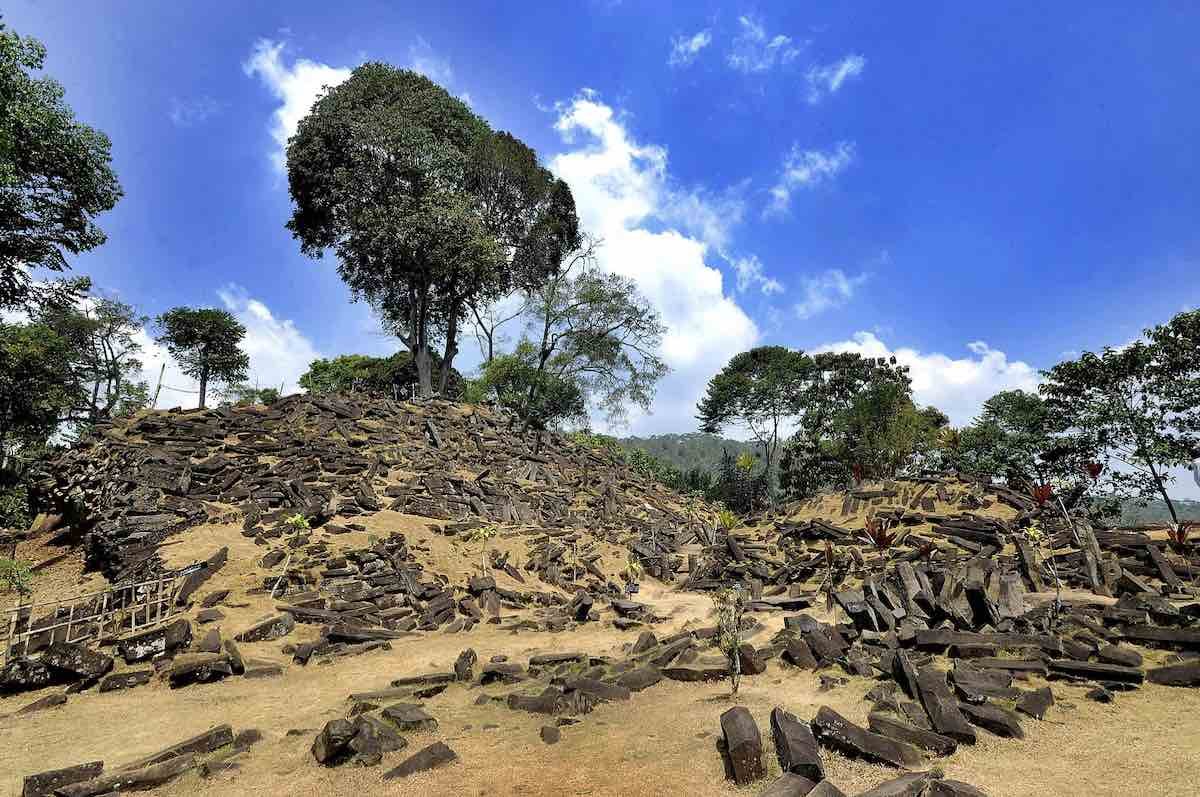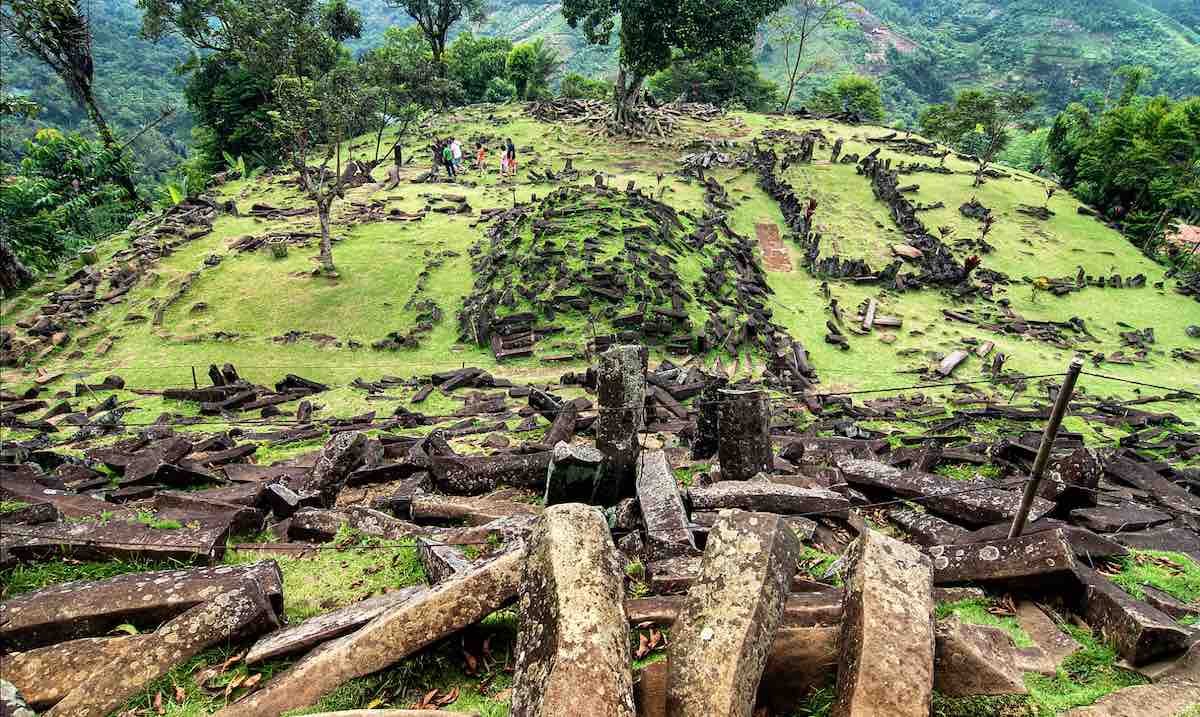Gunung Padang, a giant megalithic structure in West Java, Indonesia, was likely built thousands of years before the accepted date for the dawn of civilization, according to newly published research that suggests the famous site may be home to the world’s oldest pyramid.
Constructed during the last Ice Age sometime between 25,000 and 14,000 years ago, the new research reveals that the famous Indonesian site is believed to be older than the famed pyramids of Egypt by several thousands of years, and even older than the 12,000-year-old stone works of Göbekli Tepe in modern-day Turkey, making it the oldest known feat of engineering of its kind.
Perhaps even more compelling, tomographic tests performed at the dig site revealed that the ancient structure likely contains many large hidden chambers that have remained buried for thousands and thousands of years. Once explored, these chambers may contain clues about the site’s mysterious builders, as well as what its purpose might have been.
Gunung Padang: a ‘Mountain of Enlightenment’ for Locals and Archaeologists
Gunung Padang, which translates as “mountain of enlightenment,” was most likely built over thousands of years, with the initial core construction potentially dating as far back as 25,000 BC. Radiocarbon dating of soils at the site confirms that shockingly early date, with many construction phases taking place over the ensuing millennia.
According to the researchers studying the remote site, the builders were likely an ancient civilization, easily the oldest in recorded history, who “meticulously sculpted” the structure using rudimentary hand tools. The oldest core of the pyramid is “estimated to have been constructed during the remarkable timeframe of 25,000 to 14,000 BCE,” they write.


Archaeologists have known about the site for over a century. However, the new research effort has confirmed the earliest construction periods at the site, which challenge existing theories about the use of masonry in such constructions by ancient people.
“The builders of Unit 3 and Unit 2 at Gunung Padang must have possessed remarkable masonry capabilities, which do not align with the traditional hunter-gatherer cultures,” the researchers write.
“This study sheds light on advanced masonry skills dating back to the last glacial period,” they add, while noting that this finding “challenges the conventional belief that human civilization and the development of advanced construction techniques emerged only during the warm period of the early Holocene or the beginning of the Neolithic, with the advent of agriculture approximately 11 000 years ago.”
Instead, the researchers say, the evidence gathered at Gunung Padang and other sites, such as Gobekli Tepe, “suggests that advanced construction practices were already present when agriculture had, perhaps, not yet been invented.”
Hidden Chambers May Hold Even More Clues to Pyramid’s Mysterious Builders
In their published research, geologist Danny Hilman Natawidjaja at Indonesia’s National Research and Innovation Agency and his team say their tomographic analysis and trenching efforts confirmed the likelihood that there are hidden chambers built during the first phase of construction that have yet to be explored.
“A high-resistive anomaly in electric resistivity tomography aligns with a low-velocity anomaly detected in seismic tomography, indicating the existence of hidden cavities or chambers within the site,” they write. “Additionally, drilling operations revealed significant water loss, further supporting the presence of underground spaces.”
Presently, precious little is known about the people who built Gunung Padang. However, the complex series of research efforts that comprised this latest published study notes that the site is more than simply a set of terraces built on top of one another; instead, it is a complex construction that could rival the pyramids of Egypt.
“The studies indicated that Gunung Padang is not merely a simple prehistoric stone terrace, but a complex underground construction with substantial chambers and cavities,” the researchers explain. According to the study, some of those chambers are up to 15 meters long and 10 meters high.
Next, the team hopes to lead efforts to drill into those hidden chambers, potentially unlocking even more clues about this ancient feat of Neolithic engineering.
“Gunung Padang stands as a remarkable testament, potentially being the oldest pyramid in the world,” the researchers conclude. “Further investigation and interdisciplinary research will uncover its hidden secrets and shed more light on the ancient civilizations that thrived in this enigmatic site.”
Christopher Plain is a Science Fiction and Fantasy novelist and Head Science Writer at The Debrief. Follow and connect with him on X, learn about his books at plainfiction.com, or email him directly at christopher@thedebrief.org.

